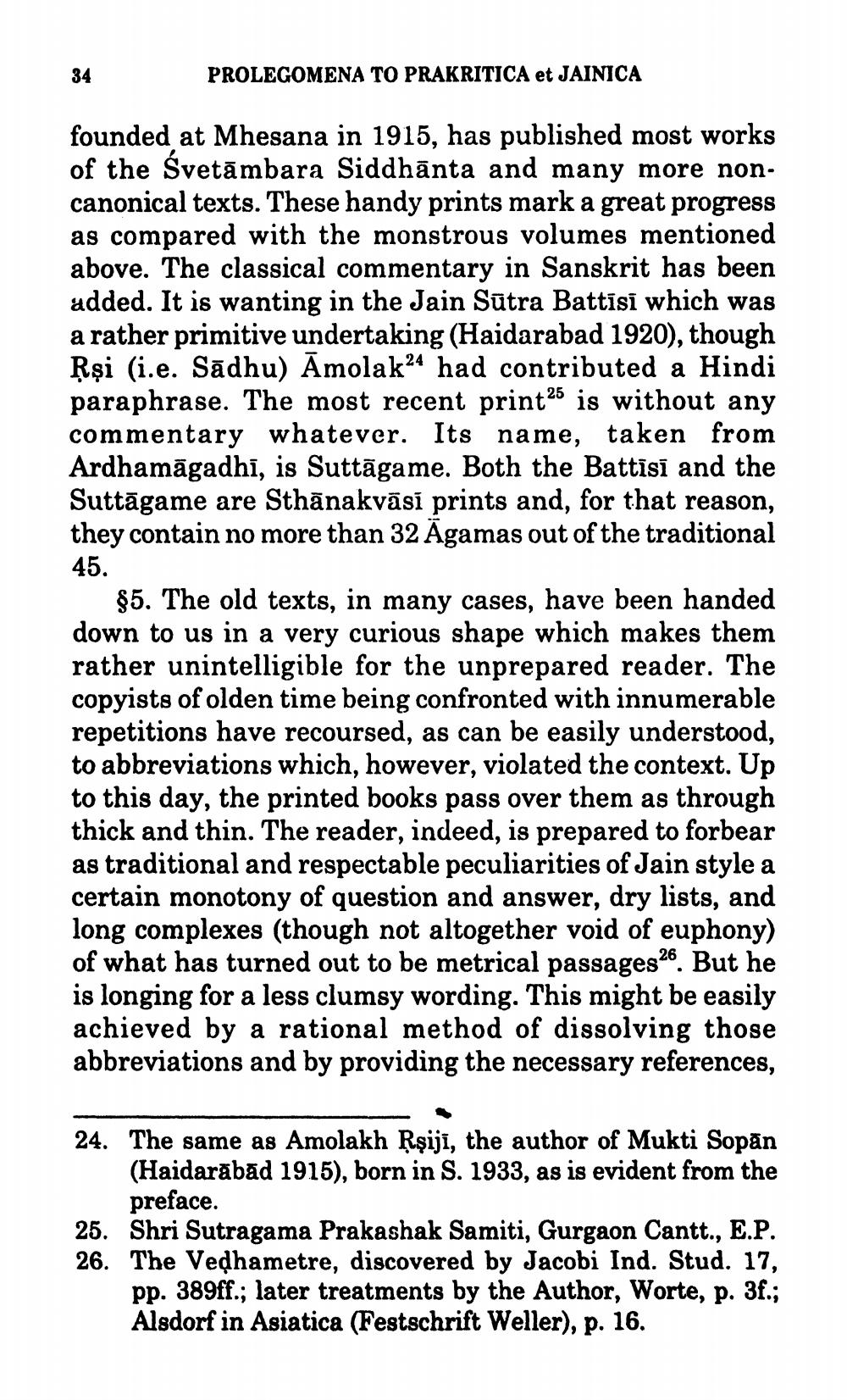________________
34
PROLEGOMENA TO PRAKRITICA et JAINICA
founded at Mhesana in 1915, has published most works of the Svetāmbara Siddhānta and many more noncanonical texts. These handy prints mark a great progress as compared with the monstrous volumes mentioned above. The classical commentary in Sanskrit has been added. It is wanting in the Jain Sūtra Battīsī which was a rather primitive undertaking (Haidarabad 1920), though Rşi (i.e. Sādhu) Amolak24 had contributed a Hindi paraphrase. The most recent printas is without any commentary whatever. Its name, taken from Ardhamāgadhī, is Suttāgame. Both the Battīsī and the Suttāgame are Sthānakvāsi prints and, for that reason, they contain no more than 32 Agamas out of the traditional 45.
$5. The old texts, in many cases, have been handed down to us in a very curious shape which makes them rather unintelligible for the unprepared reader. The copyists of olden time being confronted with innumerable repetitions have recoursed, as can be easily understood, to abbreviations which, however, violated the context. Up to this day, the printed books pass over them as through thick and thin. The reader, indeed, is prepared to forbear as traditional and respectable peculiarities of Jain style a certain monotony of question and answer, dry lists, and long complexes (though not altogether void of euphony) of what has turned out to be metrical passages28. But he is longing for a less clumsy wording. This might be easily achieved by a rational method of dissolving those abbreviations and by providing the necessary references,
24. The same as Amolakh Rşiji, the author of Mukti Sopān
(Haidarābād 1915), born in S. 1933, as is evident from the
preface. 25. Shri Sutragama Prakashak Samiti, Gurgaon Cantt., E.P. 26. The Vedhametre, discovered by Jacobi Ind. Stud. 17,
pp. 389ff.; later treatments by the Author, Worte, p. 3f.; Alsdorf in Asiatica (Festschrift Weller), p. 16.




